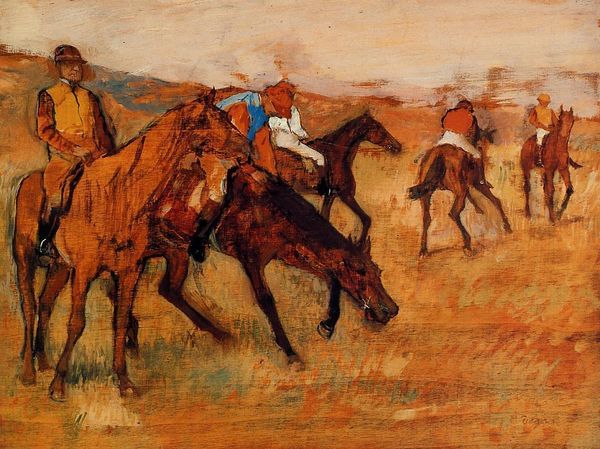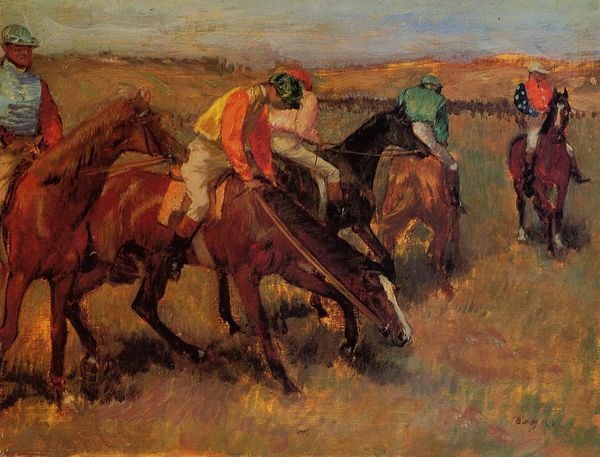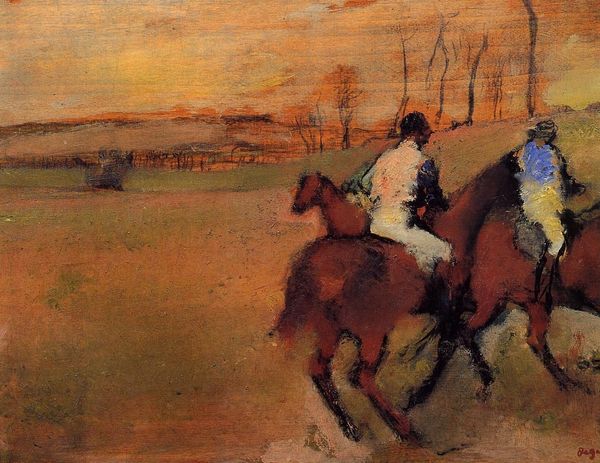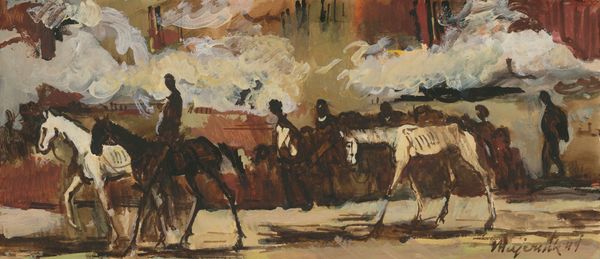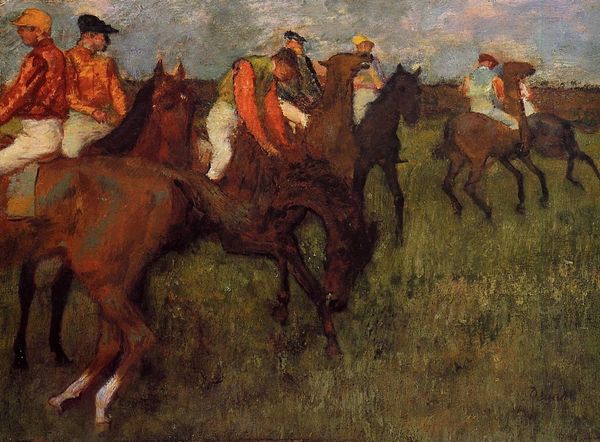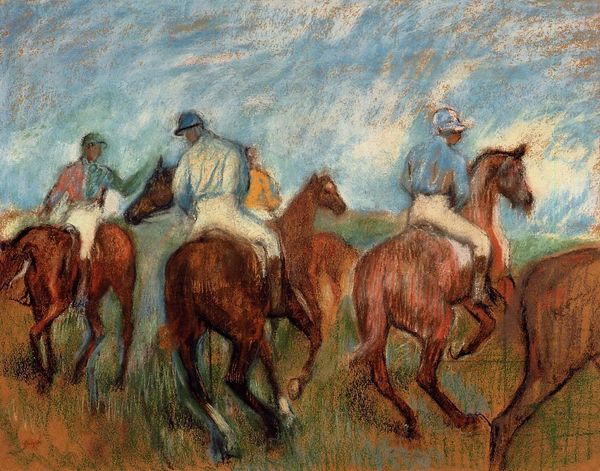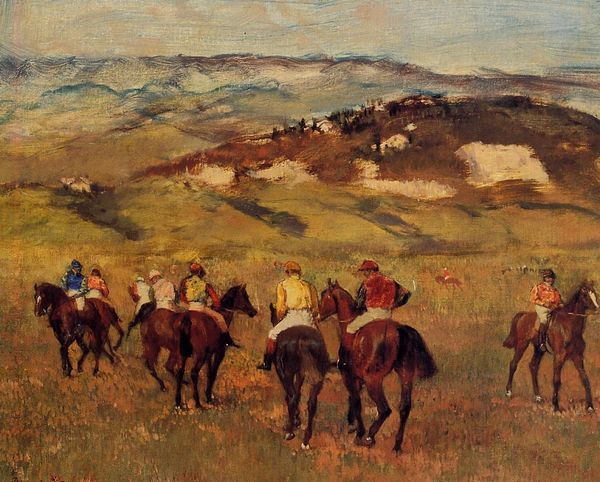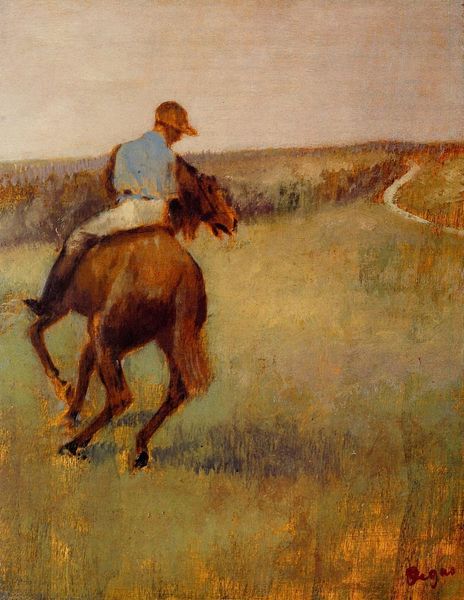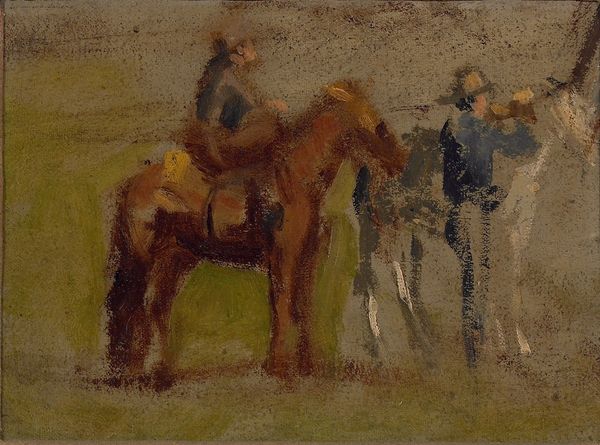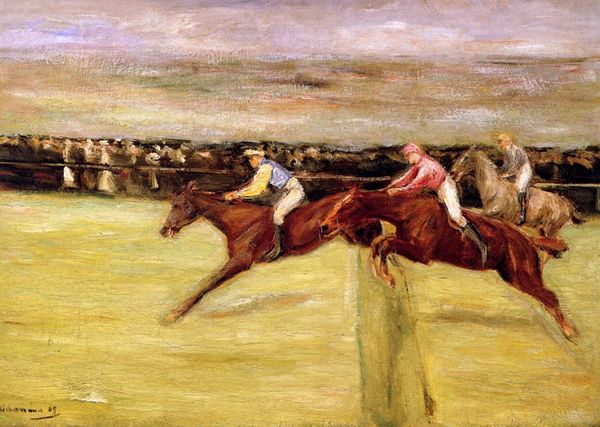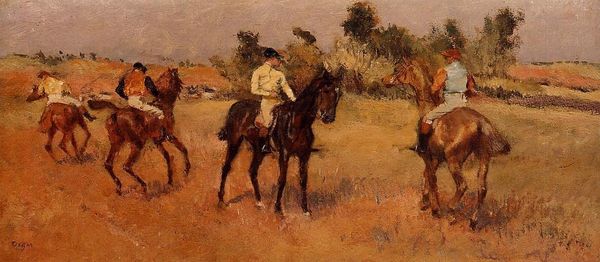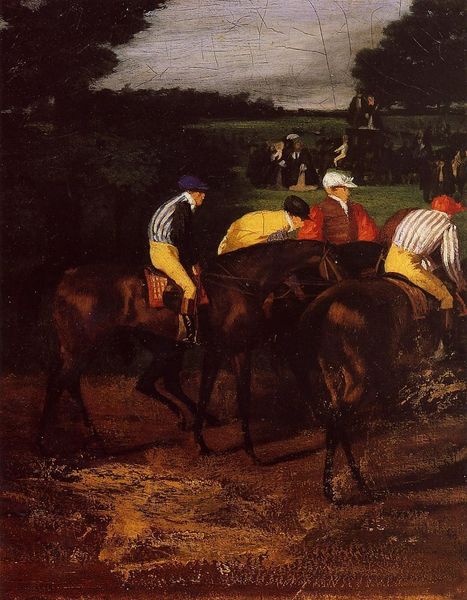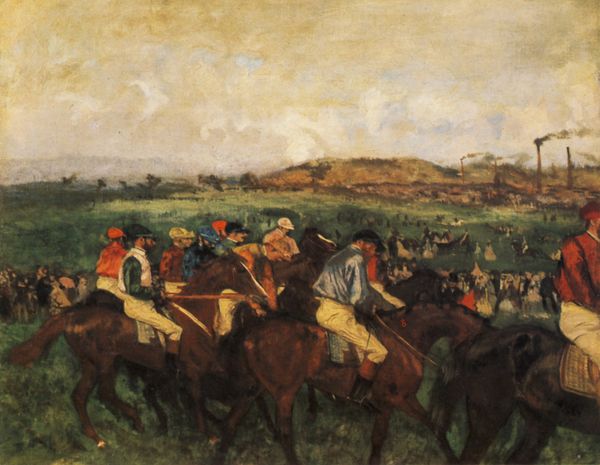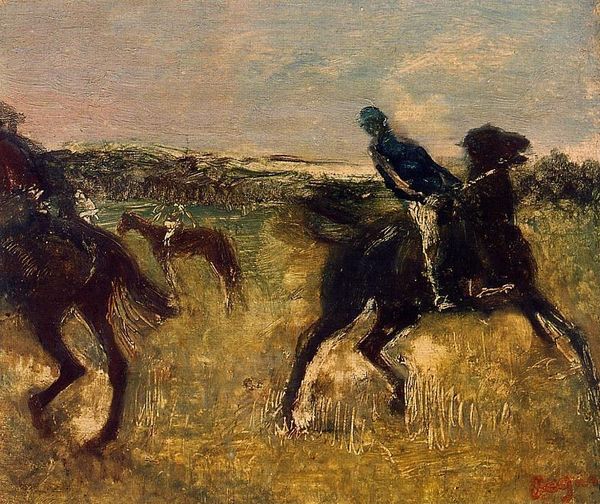
painting, plein-air, oil-paint
#
portrait
#
painting
#
impressionism
#
plein-air
#
oil-paint
#
landscape
#
figuration
#
oil painting
#
horse
Copyright: Public domain
Edgar Degas, who lived from 1834 to 1917, created Riders on a Road using an unknown medium and date, during a transformative period in French society. Degas, as a man of his time, was shaped by the rigid class structures and the evolving social norms of 19th-century France. Predominantly depicting scenes of bourgeois life, including his famous ballet dancers and horse races, Degas offers a glimpse into a world marked by both privilege and constraint. Here we see riders, anonymous and silhouetted, almost fading into the landscape. The anonymity begs the question: who are these figures, and what does their ambiguous presence tell us about the society they inhabit? Is Degas commenting on the transient nature of social life? Degas’ work often reflects an interest in capturing fleeting moments. "Art is not what you see, but what you make others see," he famously said. Perhaps, in this scene, he invites us to consider the unspoken aspects of societal life through the lens of movement and anonymity. The emotional resonance of Riders on a Road lies in its ability to evoke a sense of nostalgia and introspection, prompting us to reflect on our own roles and perceptions within the larger social landscape.
Comments
No comments
Be the first to comment and join the conversation on the ultimate creative platform.
